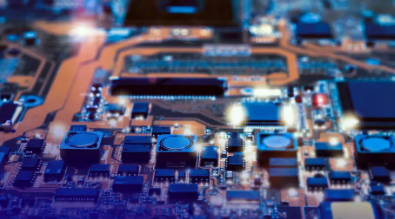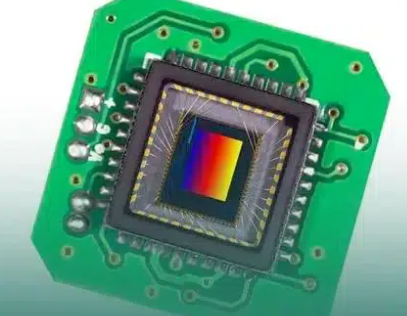- Ameya360 Component Supply Platform >
- Trade news >
- What is digital chip? What is analog chip?
What is digital chip? What is analog chip?
In the field of chips, digital chips and analog chips are often compared together, and their differences are still very obvious. Let’s take a look at what the differences are between digital chips vs analog chips.

What is digital chip?
A digital integrated circuit, also known as a digital chip, is a digital logic circuit or system that integrates components and connections on the same semiconductor chip. Digital integrated circuits are designed and run based on digital logic (Boolean algebra) to process digital signals.
According to the number of gate circuits or components contained in digital integrated circuits, digital chips can be divided into small-scale integrated (SSI) circuits, medium-scale integrated MSI circuits, large-scale integrated (LSI) circuits, very large-scale integrated VLSI circuits and ultra-large-scale integrated circuits. integrated (ULSI) circuit.
According to the different characteristics of logic circuits, digital circuits can be divided into: sequential logic and combinational logic. If divided according to circuit structure, it can be divided into two series: TTL and MOS. There are many types of digital integrated circuits, including various gate circuits, flip-flops, counters, codecs, memories and hundreds of other devices.
Common digital chips include:
1. Data memory: such as EEPROM, FLASH memory, etc.
2. Microprocessors: such as x86, ARM, MIPS, etc.
3. Digital signal processor: such as DSP, image processor, etc.
4. Digital logic chips: such as TTL, CMOS, etc.
5. Digital signal converter: such as ADC, DAC, etc.
6. Digital signal controller: such as PWM, timer, etc.
What is analog chip?
Analog integrated circuits mainly refer to integrated circuits composed of capacitors, resistors, transistors, etc. that are integrated together to process analog signals. There are many analog integrated circuits, such as operational amplifiers, analog multipliers, phase-locked loops, power management chips, etc. The main circuits of analog integrated circuits are: amplifiers, filters, feedback circuits, reference source circuits, switched capacitor circuits, etc.
Analog chips mainly include power management chips and signal chain chips.
Among them, the power management chip is a chip that is responsible for the conversion, distribution, detection and other power management of electric energy in electronic equipment systems. The signal chain chip is a chip used in the path of signals from input to output in a system, including signal collection, amplification, transmission, processing and other functions.
Common analog chips include:
1. Amplifier chip: The amplifier chip is a common analog chip whose main function is to amplify the input signal.
2. Filter chip: The filter chip is an analog chip that can select the frequency of the input signal and can realize various filter functions such as low pass, high pass, and band pass.
3. Converter chip: The converter chip is an analog chip that can transform the input signal, and can realize the transformation of the frequency, phase, amplitude, etc. of the analog signal.
4. Power management chip: The power management chip is an analog chip that can manage input power and can realize various functions such as charging, discharging, and protecting of the power supply.
5. Sensor interface chip: The sensor interface chip is an analog chip that can process the sensor output signal and can achieve functions such as signal amplification, filtering, and transformation.
Digital chips vs analog chips – what are the differences
There are some key differences between digital and analog chips in terms of their basic units and internal circuitry. Digital chips usually adopt a CMOS structure and are composed of multiple identical unit circuits and one or more control circuits, which means that they are characterized by a high degree of repeatability. Different from this, analog chips are composed of various types of unit circuits, and there are relatively few repeated unit circuits.
In addition, the quiescent current characteristics of digital chips and analog chips are also different. Digital chips with CMOS structure have lower quiescent current, while the PN structure used in analog chips has higher quiescent current. However, analog chips often have a greater performance advantage in terms of dynamic range and are able to handle a wider range of signal amplitudes.
Digital chips and analog chips are each specifically designed to process digital and analog signals, and they cannot be used interchangeably. However, modern analog chips often contain digital circuitry to convert analog signals to digital signals for internal processing and then convert them back to analog signals for output. This hybrid design allows the full advantage of digital processing in the analog signal domain but still maintains the main characteristics of analog chips.
Online messageinquiry

Microsoft Unveils In-House AI Chip, Poised for Competitive Edge with a Powerful Ecosystem
- Week of hot material
- Material in short supply seckilling
| model | brand | Quote |
|---|---|---|
| MC33074DR2G | onsemi | |
| BD71847AMWV-E2 | ROHM Semiconductor | |
| RB751G-40T2R | ROHM Semiconductor | |
| TL431ACLPR | Texas Instruments | |
| CDZVT2R20B | ROHM Semiconductor |
| model | brand | To snap up |
|---|---|---|
| BP3621 | ROHM Semiconductor | |
| BU33JA2MNVX-CTL | ROHM Semiconductor | |
| IPZ40N04S5L4R8ATMA1 | Infineon Technologies | |
| TPS63050YFFR | Texas Instruments | |
| ESR03EZPJ151 | ROHM Semiconductor | |
| STM32F429IGT6 | STMicroelectronics |
- Week of ranking
- Month ranking
Qr code of ameya360 official account
Identify TWO-DIMENSIONAL code, you can pay attention to


Please enter the verification code in the image below:

























